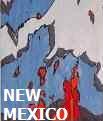What makes us want to create? My father won a songwriting award during his freshman year of college. He still has the trophy sitting on a shelf in his home-office. Throughout my childhood, I remember him playing “Little Red Riding Hood” and other tunes on his twelve-string guitar. My mother occasionally pounded on the piano, but that’s about all she did, musically. She took tole-painting classes one autumn (I was five, so I followed along), I remember because she kept the imaginary playground drawings I created, rather than the majority of her own farm animal oil-reproductions. My sister and I both play a bit of piano by ear, though neither of us pursued it enough to know any tunes by heart.
A year ago, my parents retired, within a couple months their boredom had led them to join a folk music band. They have gigs all over the southern Midwest (mostly
I’ve commented before that the world is full of people that “become artists” upon retirement, rather than dedicating a life to the pursuit.
My children, on the other-hand, occasionally go without; due to my own self-centered endeavors. Particularly, the constant moving comes to mind. Then again, I lived in the same town from kindergarten through graduation and that much stagnation just made me want to break-away and live this continuous vagabond existence in exploration of new lands and societies. So how much of my art is about self-sacrifice and how much is just the path to self-fulfillment? – DN




